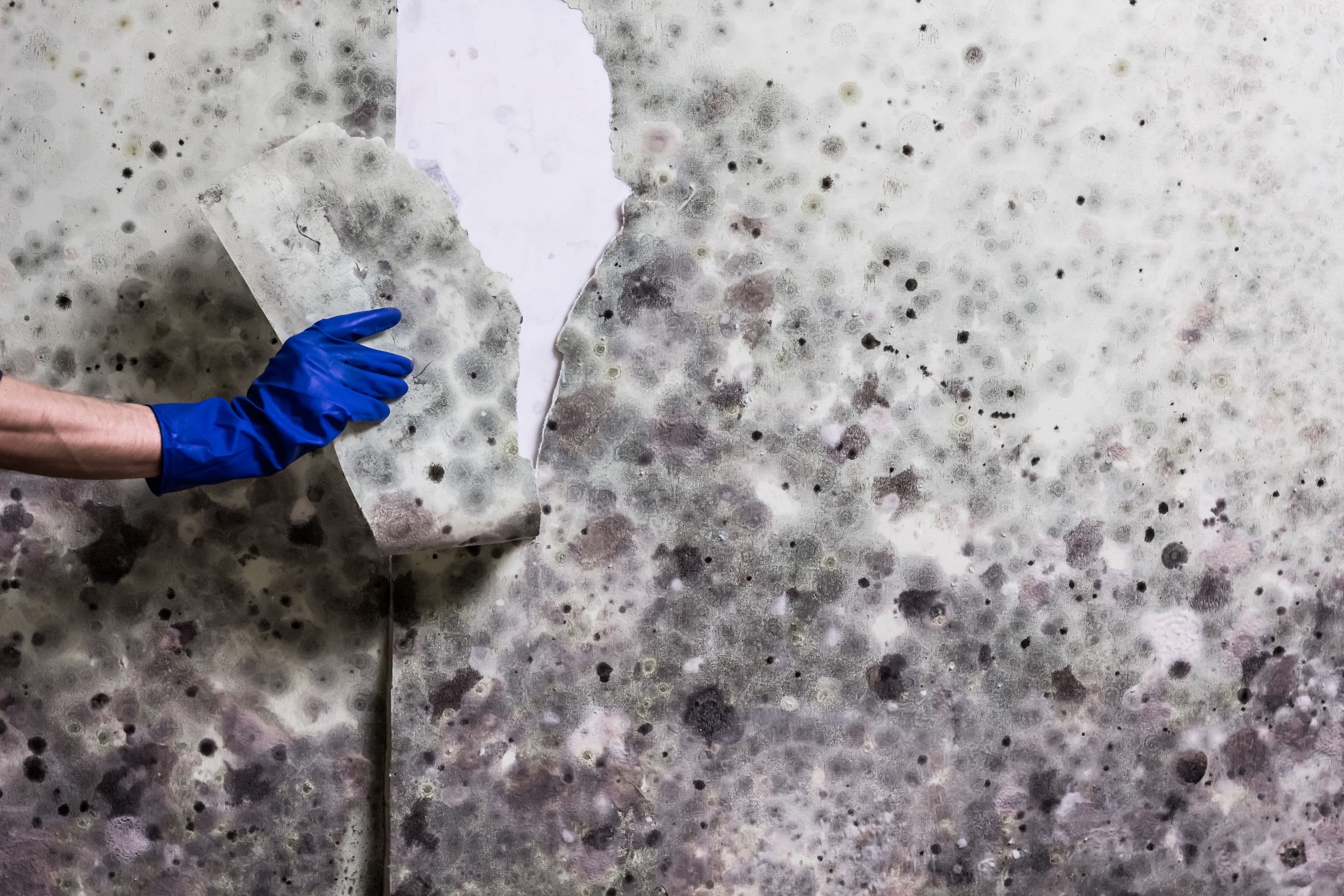How to Remove Mold From Inside Walls
While it is easy to remove mold from flooring or countertops when it is readily visible, but do you know how to remove mold from inside walls? Your best bet against mold is controlling the conditions that give rise to it. You cannot eliminate it as will be substantiated below. However, there are certain tricks and tactics you can use to dial down its abhorrence. The following content will present you with the ways through which you can counter mold that builds up inside the walls.
Control Moisture
The Environmental Protection Agency says that there is no way to completely get rid of mold and mold spores in the homes. However, you can control that it doesn’t get out of hand by regulating indoor moisture. There are three ways to do that.
First, you can start out by fixing your water problems. Be swift in finding any leaks as they lead fast to structural damages. And if not catered to at first instance, then the mold is developed due to waterlogged areas. You should clean up and dry the wet materials in one or two days’ time in order to prevent mold development. If that is not taken care of, then you might want to discard those materials.
The second way is to dial down indoor humidity. Humid spaces are a thriving environment for mold spores. Make sure your home is ventilated properly so that the air inside it doesn’t become humid and stagnant. Use air conditioners and dehumidifiers and make sure all your large appliances like the washing machine and the spinners are properly vented. Make sure there is proper ventilation especially in the kitchens and the bathrooms.
A third way to counter mold and mold spores is to prevent condensation. Ensure proper insulation upon the roofs, windows, and exterior walls and pipes so as you reduce the chances of moisture formation.
Remove Mold from Inside the Walls
There are certain prerequisite considerations to make when removing mold from inside the walls. You have to contain the whole area closely. You should be wearing protective gear as you are using “negative air filtration” apparatus.
In case mold is detected on the back of the drywall, then the drywall should be replaced or removed along with any insulation that it has. Take care and contain the moldy materials as they might be inadvertently spread across the home.
After the removal of mold-ridden walls and ceilings are tackled with, the exposed joists and studs and the surface between them should be HEPA vacuumed. It will take care of all the dust deposited on these surfaces. This will save you from bacteria.
The process of disinfection ensues after the HEPA vacuuming is performed. You can use any ant-microbial substance for the disinfection. You can wipe off the sills and metal studs with an anti-microbial dampened paper towel or cloth. You can also use a one-gallon garden type pump sprayer for larger surface areas. This sprayer contains the disinfectant.
When masonry surfaces defect with mold, then they can also be sprayed with the disinfectant. After the disinfection process, you should let the materials and surfaces dry up before proceeding towards encapsulation. This is done with encapsulated coatings which can be likened to paints. However, they have chemicals having fungicidal capacities that are good for getting rid of the mold.
In addition, when the encapsulate paint dries, the coating is hardened and locks in the mold on the surface and prevents the mold spores from being released into the air.
Mold is allergenic in any form, so the encapsulation is crucial. The encapsulated coatings complement the wood, provided that it is dry. You can use a roller or a brush to apply the coating. Use high-pressure airless sprayers for areas of wood containing residual mold. These sprayers might be expensive, but they are effective.
Related Articles
Business News
Popular Posts
- Boosting Self-Confidence and Self-Esteem - Your Path to Empowerment
- Cultivating Resilience and Mental Toughness - Keys to Thriving Amidst Lifes Challenges
- 50 positive affirmations to be read every day
- Mind Balance - for those who dare to redefine their limits
- MindBalance not only helps individuals but couples stay together longer
- Mind Balance - 100 Innovative Ways it Can Unleash Your Full Potential
- Unlocking Potential - The Power of Personality Assessment in Overcoming Obstacles
- Embracing Faith and Self - A Christian Guide to Personal Strengths and Weaknesses
- Hindu Wisdom for Modern Lives - Balancing Strengths and Weaknesses through Vedic Teachings
- Buddhist Reflections - Navigating the Path of Self-Awareness and Enlightenment
- Uniting in Universal Love - Embracing Commonalities Across Faiths
- Illuminating the Path - Overcoming Ignorance and Misunderstanding in World Religions
- Cultivation and Improvement of Personality Traits to Deepen Ones Relationship with God
- How Mind Balance Can Improve the Mindsets of Employees
- A Cautionary Vision - The Grim Future of a Divided World Without Love and Balance
- Balancing Act - How Understanding Personalities Could Unlock World Peace
- Harnessing Personality Assessment for Enhanced Well-being and Fulfillment
- Discovering Hinduism - A Deep Dive into Its Traditions Texts and Teachings
- The Essence of Islam - Understanding Its Beliefs Rituals and Cultural Significance
- Clearing Mental Plaque: The Path to Enhanced Communication and Divine Connection
